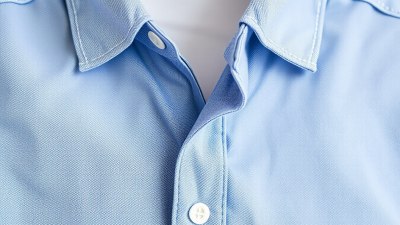How Humidity Always Finds You in Your Favorite Shirt
Explore the science behind humidity's impact on your favorite shirt and how to stay comfortable in humid conditions.

Image created with Flux Schnell
Humidity is an invisible yet impactful factor that can influence our comfort, especially when it comes to wearing our favorite shirts. Whether it’s a crisp cotton button-down or a soft linen tee, the moisture in the air can seem to find its way to us, making even the best clothing choices feel less than perfect. Understanding how humidity interacts with fabrics and our body can help us manage this persistent nuisance more effectively.
What Is Humidity and How Does It Affect Us?
Humidity refers to the amount of water vapor present in the air. When humidity levels are high, the air contains more moisture, which inhibits the evaporation of sweat from our skin. This process is crucial because evaporation is how our bodies cool down. If sweat doesn’t evaporate effectively, it leaves us feeling sticky, uncomfortable, and often clammy.
But the impact of humidity goes beyond just how our skin feels. It also directly affects the clothing we wear, particularly that favorite shirt you rely on to look and feel good throughout the day.
The Science of Moisture and Fabric Interaction
Clothing is essentially a barrier between our body and the external environment. When the air is humid, the moisture-laden air can interact with this barrier in various ways depending on the fabric type. Natural fibers like cotton, linen, and wool are hygroscopic, meaning they absorb moisture from the air and from sweat. This absorption changes the weight and texture of your shirt, often making it heavier, damp, and sometimes clingy.
Synthetic fibers like polyester and nylon are less absorbent but tend to trap moisture against the skin because they don’t allow air to circulate as well. This can cause an accumulation of sweat, increasing discomfort. Some advanced synthetic fabrics are engineered to wick moisture away from the skin and into the outer layers where it can evaporate more readily, which helps mitigate this effect.
Why Does Humidity Seem to Target Our Favorite Shirts?
There’s a psychological and physical component to why humidity can feel like it always affects your favorite shirts first. On one hand, we tend to notice discomfort more when it happens in clothes we are emotionally attached to or that we want to look good in. On the other hand, certain clothing choices can inadvertently amplify humidity’s effects.
For example, tight-fitting shirts or fabrics that lack breathability do not allow moisture to evaporate efficiently. Your favorite shirt may be made of a material that absorbs moisture more readily, making the wetness more noticeable. Additionally, colors like dark shades tend to show sweat stains more clearly, making you more aware of humidity’s presence.
Temperature, Sweat, and Fabric: The Perfect Storm
Humidity’s discomfort is compounded by the relationship between temperature and sweat production. When the temperature rises, our bodies produce more sweat to cool down. If the surrounding air is highly humid, the sweat has nowhere to evaporate, remaining on your skin and seeping into your clothes.
Your favorite shirt can then become a damp barrier that holds heat close to your skin, producing a feedback loop of increased sweating and discomfort. This cycle makes it feel like humidity has singled out your preferred garment, whereas in reality, it’s about how heat, sweat, and moisture interact with fabric.
The Role of Fabric Weave and Shirt Fit
The weave of your shirt’s fabric plays a significant role in its breathability and moisture management. Looser weaves have more gaps between fibers, allowing air to circulate and moisture to evaporate more readily. That’s why shirts made from fabrics like loosely woven linen are popular in hot, humid climates.
Tighter weaves like those found in many cotton dress shirts are less breathable, trapping moisture and heat. The fit also matters—a loose fit promotes airflow, which helps keep the body cool. In contrast, tight-fitting shirts restrict airflow, trapping sweat and increasing clamminess.
How Hygroscopic Fabrics Respond to Humidity
Hygroscopic fabrics absorb not only sweat but moisture from the environment. Cotton, for instance, can absorb up to 27 times its weight in water. This quality makes these fabrics comfortable in dry heat because they can hold moisture without feeling wet immediately. However, in high humidity, the fabric is constantly exposed to moisture, which saturates and weighs down the fibers.
This absorption reduces the fabric’s ability to wick sweat effectively, leading to that damp feeling. It’s a paradox where the fabric’s ability to take up moisture can sometimes create a less comfortable experience in humid conditions.
The Chemistry Behind Sweat Stains and Odor
Humidity not only influences how wet your shirt feels but can also impact sweat stains and odors. Sweat contains water, salts, and organic compounds. When sweat evaporates slowly due to humidity, salts can crystallize on fabrics, leading to visible white or yellow stains.
Moreover, bacteria thrive in moist environments. When shirts stay damp for prolonged periods, bacterial growth accelerates, causing unpleasant odors. This problem is one reason why humidity makes your favorite shirt feel like a magnet for discomfort beyond just moisture sensation.
Managing Humidity’s Impact on Your Favorite Shirt
Understanding how humidity interacts with fabrics and sweat can help you make more informed clothing choices and manage comfort. Here are some practical tips to protect your favorite shirts from humidity’s unfavorable effects:
- Choose Breathable Fabrics: Opt for fabrics like linen, cotton blends, or moisture-wicking synthetics designed to handle moisture efficiently.
- Wear Loose-Fitting Styles: Shirts that allow airflow between the fabric and skin help sweat evaporate faster.
- Use Antiperspirants and Sweat Shields: Applying antiperspirant can reduce sweating. Additionally, sweat pads or shields can protect shirts from soaking up sweat.
- Launder Promptly: Wash damp shirts quickly to prevent bacterial growth and remove odor-causing residues.
- Layer Smartly: Sometimes wearing an undershirt that absorbs sweat can protect the outer shirt from excess moisture.
- Store Properly: Ensure shirts are dry before storing to prevent mildew, which humidity encourages.
Innovations in Shirt Fabric to Combat Humidity
The fashion and textile industries have responded to humidity challenges by developing innovative materials and finishes. Moisture-wicking fabrics made with polyester blends and advanced fiber technologies pull moisture away from the skin to the shirt’s surface, where it evaporates quickly.
Additionally, antimicrobial treatments inhibit bacterial growth, reducing odor problems. Some fabrics also incorporate cooling technologies that react with sweat to enhance evaporation and reduce stickiness.
For those who cherish their favorite shirts, investing in these technologically advanced fabrics can offer significant comfort benefits in humid environments.
Environmental Influences on Shirt Comfort
Environmental factors beyond just humidity also play a role in how your favorite shirt feels. For instance, wind can aid evaporation, while sunlight can warm the fabric, influencing your perception of heat and moisture.
Indoor environments often present a different challenge. Air conditioning and ventilation reduce humidity, improving comfort, but areas lacking these features may exacerbate discomfort by trapping warm, moist air inside.
Psychological Perceptions of Humidity in Clothing
Humans are not only affected by physical sensations but also by perceptions. The awareness that humidity often makes your favored shirt uncomfortable can cause you to focus more on that sensation, heightening discomfort.
Moreover, the distress of sweat stains or odors in a cherished garment can make the experience more frustrating. Choosing the right shirts for different conditions, therefore, isn’t just a practical matter but also contributes to emotional comfort and confidence.
Practical Wardrobe Strategies for Humidity Hotspots
If you live or spend time in places with high humidity, planning your wardrobe with humidity in mind can help you maximize comfort and style:
- Rotate shirts frequently to ensure clean and dry garments.
- Carry an extra shirt for situations when humidity is overwhelming.
- Use breathable garment bags when traveling to prevent moisture buildup.
- Select lighter colors, which tend to reflect heat and reduce visible sweat marks.
- Consider shirts with underarm ventilation panels or mesh inserts to increase airflow.
Humidity’s seemingly magical ability to gravitate toward your favorite shirt is a complex interplay of environmental moisture, fabric properties, body physiology, and even psychology. Recognizing this interaction can empower you to make choices that reduce discomfort and extend the life of your beloved garments.
By selecting appropriate fabrics, adopting smart laundry routines, and leveraging technological advances in textile production, it’s possible to enjoy your favorite clothing pieces even when the air is thick with humidity.
Ultimately, no matter how high the humidity climbs, understanding what happens at the surface of your shirt allows you to meet the challenge head-on and remain comfortable, confident, and stylish throughout the day.











